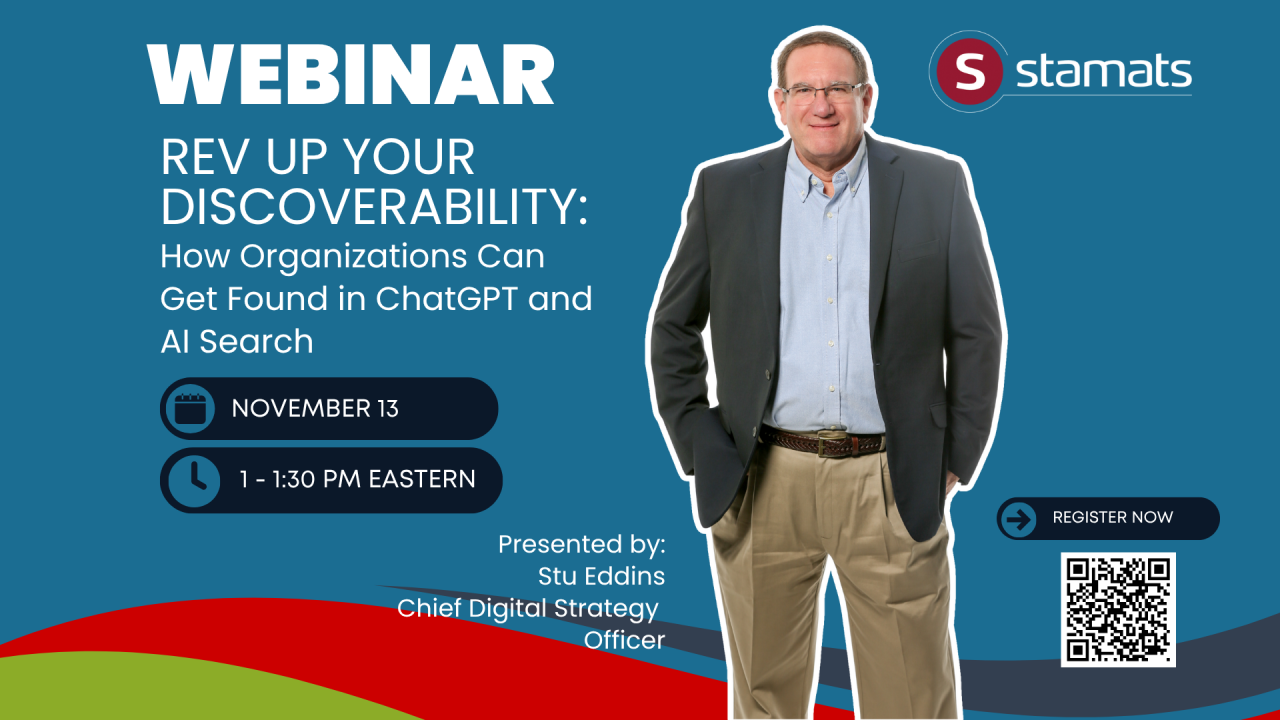Written by
on

The idea behind the request for proposal (RFP) process is that by inviting multiple vendors to submit bids for engagements and projects, colleges and universities will be more likely to get better solutions at better values over time.
Sounds good, but in practice, many higher education institutions find this not to be the case. Administrators that send out RFPs are often frustrated with the proposals they receive because they are unresponsive or off base. And consultants who receive the RFPs are often confused about what is being sought and why. The result is predictable. Even though the number of RFPs is growing, we know from our own experience and conversations with other consultants that the number of RFPs that consultants respond to is on the decline.
Recognizing this trend, I wanted to take a few minutes and offer some concrete ideas on how to make the process more effective for both clients and consultants. In our experience, a great RFP has five key elements:
- Introduction: A clear overview of the project is essential. Not only does this force the client to think through what they are seeking, but it also gives the consultant a complete sense of the project rationale and goals.
- Project scope and requirements: This section of the RFP should detail exactly what is sought and why. As with the introduction, clarity at this point is essential because it will allow vendors to provide a customized, detailed response. It is also useful to disclose other consulting relationships you have. This enables responders to your RFP to dovetail their response with the resources you already have in place.
- Review process: Be clear about who is on the decision-making team and how the proposal will be evaluated. Too often, vendors write a proposal and then present to one team, only to have someone not involved in the process make the decision. In some cases, the client team may have made a choice on who they want to work with only to be overruled. This approach undermines the selection process and project implementation.
- Timeline: There are actually two distinct timelines in play. First is the timeline for the RFP process, including dates for consultant Q&A, any required on-campus meetings, and when the RFP is due. Then there are the dates for the project itself. As for the proposal-response time, realize that unreasonable response times of less than a week and a half will result in fewer consultants responding to the RFP. Qualified vendors who are already busy with commitments to clients won’t have time to formulate a proposal as tailored as it might otherwise be. Regarding project-completion dates, know that complex projects often have multiple due dates. Make sure the dates are both realistic and in logical order. For example, don’t have the production of a new website ahead of the date for completing research that will inform your website strategy. Finally, make sure the due dates are consistent throughout the proposal. It is not uncommon for one section of the RFP to have one set of due dates followed by conflicting dates in the next section.
- Budget: Colleges and universities often withhold budget information from the RFP. However, in the absence of budget information, some qualified consultants may elect not to respond. A better strategy is to include budget ranges for key components. Not only does this evidence a commitment to the project on your part, but it helps responders understand if you have an idea of what dollars are required for project success.
Research More About the RFP Process: Higher Education RFP Best Practices
Beyond the nuts and bolts of the RFP as a document, there are a number of safeguards that should be built into the process. Before sending out an RFP, make it a point to account for these considerations:
Speak with one voice. RFPs are increasingly the work of multiple writers, which can result in a conflicting mixture of voices, strategies, goals, and definitions. Or worse yet, the RFP contains elements that have been cut and pasted from other documents. It is frustrating for consultants to read an RFP about enrollment only to discover one or more pages on specs for building a new residence hall. Take the time to edit your RFP so that it has a single voice, clear objectives, and follow-up details.
Do a little research on prospective consultants. Look at their websites and check out their blogs, case studies, and industry thought-leadership contributions to see if their array of products and services is a good match for you before you send the RFP to them. Talk to some of their clients. When possible, query the consultant ahead of time to gauge not only their capabilities but their interest. Even a short conversation on the phone will give you tremendous insight into a prospective partner. You will get a sense of their values, approach, and even whether or not they are a good fit for you. These insights will prove invaluable if the project hits a speed bump. In such cases, you can candidly address the issue because an initial trust level has been established.
Include a Q&A period. This allows vendors to gain a greater depth of understanding and ultimately results in a better proposal. For significant RFPs, give consultants a chance to visit campus, meet major decision makers, and conduct interviews if desired. This will make for a more customized response. Also give ample time between the Q&A period and the proposal due date so the consultant can incorporate what they learned into the proposal.
Research More About the RFP Process: How to Write a Solid Higher Ed Website RFP
Don’t let the purchasing process overshadow the purpose of the RFP. While there are often legal requirements for RFPs, the purchasing process can sometimes overshadow the purpose of the project. Involve purchasing and follow applicable legal procedures, but make sure the professionals who actually need the requested services have a big voice in developing the RFP and choosing the vendor. In addition, make sure there is agreement throughout the body of the RFP and cover letter for all forms and documents that must be reviewed, signed, or supplied by the prospective consultant.
Resist the temptation to send out an RFP to dozens of consultants. When consultants receive an RFP, they typically calculate the odds of securing the project. If they know that the RFP was sent to 20 other firms, their interest in responding declines. A much better strategy is to identify a handful of companies that are a best fit for the project. This saves you time in evaluating multiple RFPs of varying quality and increases the likelihood that you will get a response from the vendors you are interested in most.
Resist the “my way or the highway” approach to RFPs. Avoid writing an RFP that is so specific or prescriptive that it is resistant to input from the consultant on how the project might be enhanced. Good consultants want to meaningfully differentiate themselves from their competitors—an overly strict RFP means they will be forced to limit their response and diminish the value they offer. The resulting “sameness” from all vendors means the best ideas might be exempted from consideration. Making sure the prospective consultant knows you are open to new ideas can vastly improve the quality of the project.
Put a limit on the length of the proposals you want to receive. When vendors know they only have 10 or 15 pages to supply, the quality of the proposal will instantly improve because they will only focus on the key issues. The benefit to you is fewer pages to wade through looking for the essentials. For clarity, also make sure the prospective consultant knows if the required forms are to be included in the page count.
In the end, it comes down to a people thing. In other words, fit matters. Choosing a consulting partner is more than project specs and timelines. While vendor portfolios are important, so are personalities. Make sure your proposal process includes ample time to get to know prospective partners. This is especially important if you were not able to screen potential vendors before you sent out your RFP.
Consider issuing an open RFP. We have seen a number of institutions employ an open RFP under which a number of vendors are approved to receive work as the need arises during the RFP’s effective period. For example, under an open RFP for marketing services (a purposely broad category), various vendors are qualified to provide actual marketing work without the need for further RFPs. Vendors selected to provide work are determined by the need and fit with a contract for services negotiated individually and often with the assistance of someone from purchasing. The benefit is that the cumbersome RFP process is only done once, and buyers within an institution still have choices that they can make based on a particular need. For example, one firm might appear on the approved list of vendors that can provide marketing-research services. Another might be on the list that can provide event-production services.
While RFPs are useful in many situations, there are also times when they are not the right approach. Here are four scenarios when it is not advisable to send out an RFP:
- There is no current funding for the project. Colleges and universities are increasingly using the RFP process to fish for new ideas and approaches or determine budget requirements. When vendors sense a fishing expedition, they are less willing to respond to the RFP. Consultants talk to one another—you don’t want a reputation as someone who abuses the process.
- You already have a consultant in mind. If you know who you want to work with, don’t waste everyone’s time by going through the motions. Doing so creates unnecessary cost and waste in the service ecosystem, which then becomes a cost of doing business that is ultimately passed on to the consumers of those services.
- There is no buy-in from the leadership team for the project. To be successful, a project must have buy-in from the senior team. Nothing derails a project faster than a senior team that is not committed to the work.
- You are not sure what you want to do. Rather than sending out an RFP, send out a much simpler RFI (request for information). It is easier to respond to, and you can hire a consultant to help prioritize your needs if you are not sure what to do. This can be especially helpful when you have a number of critical issues all vying for attention, when the senior team has multiple ideas on how to proceed, and when there are inconsistent expectations or tight budgets.
These best practices will help you develop better RFPs and increase the likelihood that the consultants you are most interested in working with will respond.
Ready to Get Started?
Reach out to us to talk about your strategy and goals.


